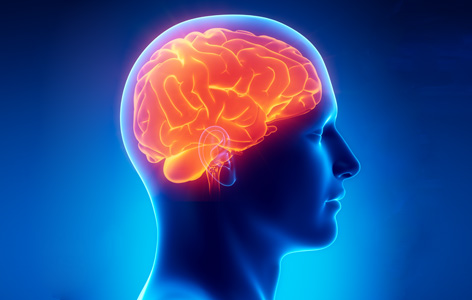
Glioblastoma is a particularly aggressive brain cancer that is highly resistant to treatment in part because a small subset of glioblastoma cells acquire the ability to self-renew. This small population of cells often evade treatment, which is why researchers are seeking new methods to target them.
A recent study led by PM Cancer Centre Dr. Mathieu Lupien and his SickKids collaborator Dr. Peter Dirks has revealed that adult glioblastoma cells may acquire these self-renewing properties due to the decreased expression of a protein known as H3.3.
H3.3 plays an important role in the way DNA is packaged by providing a scaffold onto which the DNA can be tightly wrapped. Defects in the H3.3 gene have been linked to the development of childhood glioblastomas; yet adults who develop the disease seldom have a dysfunctional H3.3 gene.
The team led by Drs. Lupien and Dirks discovered that self-renewing glioblastoma cells from adult patients express a protein known as MLL5, which represses the expression of H3.3. A reduction in levels of H3.3 caused by MLL5 expression leads to reorganization of specific regions of the chromosome, which makes the DNA more compact. This compacted DNA structure favors expression of the genes that glioblastoma cells need to self-renew.
The team has since identified two chemical compounds that may prevent adult glioblastoma cells from acquiring this ability to self-renew. Further development of these compounds may lead to new drugs, providing an alternative treatment for patients with glioblastoma, who generally have poor prognoses and limited treatment options.
This work was supported by Genome Canada, the Ontario Institute for Cancer Research, the Hospital for Sick Children Foundation, Jessica's Footprint, Hopeful Minds Foundation, BrainChild, the Canadian Cancer Society Research Institute, the Canadian Institutes of Health Research and The Princess Margaret Cancer Foundation. J Dick holds a Tier 1 Canada Research Chair in Stem Cell Biology.
MLL5 orchestrates a cancer self-renewal state by repressing the histone variant H3.3 and globally reorganizing chromatin. Gallo M, Coutinho FJ, Vanner RJ, Gayden T, Mack SC, Murison A, Remke M, Li R, Takayama N, Desai K, Lee L, Lan X, Park NI, Barsyte-Lovejoy D, Smil D, Sturm D, Kushida MM, Head R, Cusimano MD, Bernstein M, Clarke ID, Dick JE, Pfister SM, Rich JN, Arrowsmith CH, Taylor MD, Jabado N, Bazett-Jones DP, Lupien M, Dirks PB. Cancer Cell. 2015 December 14 [Pubmed abstract]




